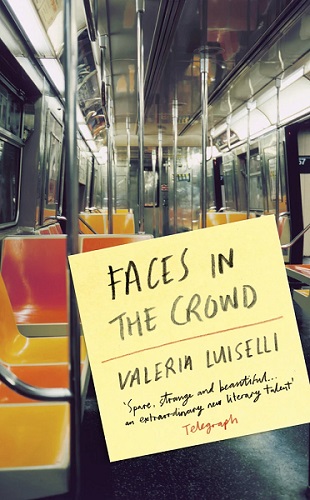I can see people having two very different reactions to the way Valeria Luiselli tells the story in “Faces in the Crowd.” I would understand those who would feel too unsettled by the experience of not exactly knowing 100 percent what is happening all the time. I’m in the other group. I loved it.
Reading this book snapped me back to the experience of Italo Calvino’s “If on a winter’s night a traveler,” Edwin Abbott’s “Flatland,” or Terrence Malick’s “The Tree of Life.”
Watching Malick’s movie, I was left sure that I had experienced something, even if I couldn’t articulate what that was. Calvino hit me in the face with an immediate second-person narrative that unsettled me from the point of never having an author tell me what I was doing.
Luiselli does it by alternating pieces of the narrative — sometimes just a sentence at a time, sometimes for a few pages — between different scenes by the same narrator, or two narrators taking turns but in an unbalanced way. One might take the story for three sections, the other for one, back to the first one for two, the other for three. The result is the feeling that until the very last word of a particular segment, you might not actually know which person is telling their part of the overall story.
The main narrator is telling her own story of being a mother of two young children and working as a translator for a publisher. She also writes a story about Mexican poet and diplomat Gilberto Owen from his point of view living in the same city. The narratives take place decades apart, and yet both the woman and Owen tell of crossing each other’s paths in the present.
“Among these people was a woman with a brown face and dark shadows under her eyes, whom I saw repeatedly: sometimes on the platform, waiting, at others onboard the train, but always a different one from mine,” Owen says. “The woman appeared to me most often in those moments when two trains on parallel tracks are traveling at almost the same speed for a few instants and you can see the other people go past as if you were watching the frames of a celluloid reel.”
Owen’s description follows-up on the woman’s own vision of having seen him on a train in the same way and was one of the points in the book where I stopped and simultaneously thought, “YES! and Waaaaaaaait a minute…”
Add to that the woman pulling back the curtain at times and describing times her husband happened to read one story or the other, perhaps objecting or questioning what he saw, and her admitting something she told you 40 pages ago wasn’t true.
“Through my own carelessness, he’s read some more of these pages. He asks how much is fiction and how much is fact,” she says.
What are you, the reader, supposed to do with all that? I loved the experience of letting Luiselli take the wheel while I watched it all from the back seat.
This style is surely not for everyone, but I would encourage those with even a little bit of intrigue to check out this book. It’s instantly a more memorable experience than most I’ve read in recent years.
